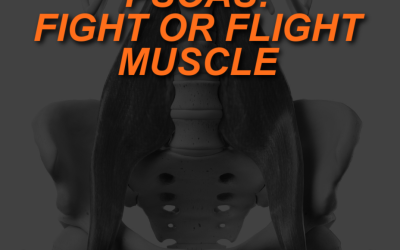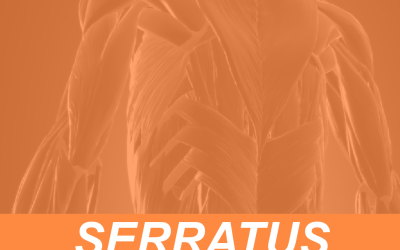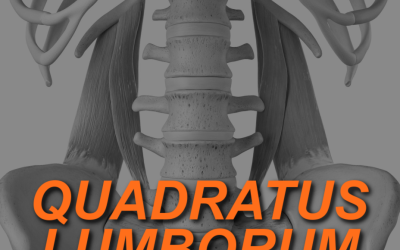Runner’s knee is a broad term used to describe pain felt from various knee problems. Typically, it is used to refer to patellofemoral pain syndrome (PFPS), which is also a broad term used clinically to explain pain felt around the patella or on the front of the...
Kellen Nyemb
How Personal Trainers Can Handle Injured Clients Return to Exercise
As trainers, a lot of our work involves doing all we can to prevent injuries from occurring. Unfortunately, injuries still happen both under our watch and in our clients personal lives, so we are also tasked with supporting our clients when they are returning to...
Understanding and Training the Quadriceps
Given that the quadriceps muscles are the largest muscle complex in the body, they are important to understand in depth and to focus on in training with clients. Training the quads can help to create or restore balance in the lower limbs, reduce knee pain and support...
Understanding the Vastus Muscles
The quadriceps femoris muscles (quads) are the most voluminous muscles in the body— the quad muscles together contain more mass than any other muscle group— the general population knows where their quads are: on the front of the thigh between the hip and knee...
5 Rules For Shooting “Gym Videos”
Working in the fitness industry, it is not uncommon for our news feeds on social media to be full of various gym videos. We may see folks videoing themselves hitting a PR, trainers sharing videos of their clients, or posting ideas for workouts their followers can do...
Re-establishing Boundaries and Setting New Policies
Having policies in place as a fitness professional is vital to establishing boundaries early on when working with a client. But oftentimes, we learn as we go and don’t realize the need for a specific policy or boundary until something happens. In other cases,...
Psoas: The Fight or Flight Muscle
The psoas muscle is one that is talked about often– whether an athlete is blaming it for "tight" hips or when a yoga instructor claims that a stretch is going to release it. You may have even heard that it is also considered the “fight-or-flight” muscle. But what does...
The Boxer’s Muscle: Serratus Anterior
Serratus anterior is often referred to as “the boxer’s muscle” because it is largely responsible for protraction of the scapula – the forward movement of the shoulder blade that takes place, like when someone throws a punch. But even if our clients never step in the...
Understanding Quadratus Lumborum: What Personal Trainers Need to Know
The Quadratus Lumborum (QL) muscles, a common source of lower back pain, are located on either side of the lumbar spine. While they are situated at the lower back between the pelvis and the lowest ribs, and thus commonly referred to as a low back muscle, these muscles...
Motivational Messaging: Five Things Fitness Professionals Should Probably Stop Saying
As trainers, we are constantly looking for ways to encourage and motivate our clients, and one of the most common ways we do this is with our words. But, what if our words have the opposite effect of our intention of motivating them? Using intentional language is an...
The Difference Between Pain and Discomfort
“That hurts!” We’ve likely all heard our clients express some experience of pain or discomfort. They might say an exercise hurts, or that it is painful, or perhaps complain about pain post-workout. Naturally, we don’t want our clients to hurt themselves. Oftentimes,...
The Stress and Injury Link
As trainers, our clients will often share with us details about their lives outside of the time we are training together including stress surrounding home life, work, relationships, or as parents. Research has shown that there is a link between stress and injury, and...
Foot Pain: Plantar Fasciitis and Achilles Tendinitis Commonalities
Two of the most common injuries to the foot or heel are plantar fasciitis and achilles tendinitis. These two overuse injuries have even more in common-- from causation to presentation of symptoms to treatment and prevention. Here, we’ll explore these commonalities as...
Understanding the Achilles Tendon
In Greek mythology, the warrior Achilles was known to have one weak spot: his heel. Because of this, the idiom Achilles’ heel is often used to describe one’s weakness or vulnerability. It might be surprising to learn that the Achilles tendon is actually the strongest...
Ground Reaction Force and Running Form
Running is a popular form of exercise and an effective way for our clients to boost cardiovascular fitness. However, it is associated with a higher risk of overuse injury than other forms of aerobic exercise like walking, swimming or cycling. Over 50% of people who...
Proximal Hamstring Tendinopathy: A Pain in the Butt
When personal trainers think of a hamstring injury, we might picture a sprinter halting mid-sprint, grabbing the back of their thigh and wincing in pain. This is an accurate image, representing an acute hamstring injury - perhaps a strain or a tear. But hamstring...
Rectus Femoris: Understanding and Training the Largest Quad Muscle
Rectus femoris is the most superficial of the four quadriceps muscles, meaning it is located closest to the skin, above the other three The other quadriceps muscles are vastus medialis, vastus lateralis, and vastus intermedius. Of these four muscles, rectus femoris is...
Understanding Tensor Fasciae Latae (TFL)
Tensor Fasciae Latae, otherwise known by its abbreviation TFL, is a thin muscle of the hip region located on the thigh just inferior and lateral to the anterior superior iliac spine (ASIS). Despite its small size, the TFL is largely important with a number of...





